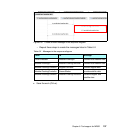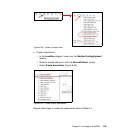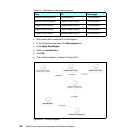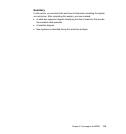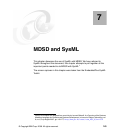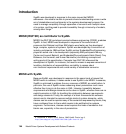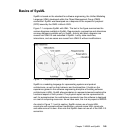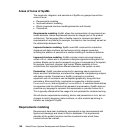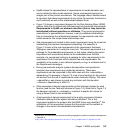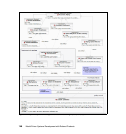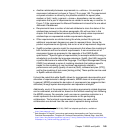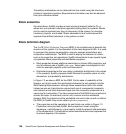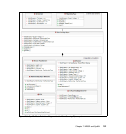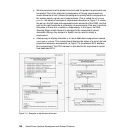
Chapter 7. MDSD and SysML 145
Basics of SysML
SysML is based on the standard for software engineering, the Unified Modeling
Language (UML) developed within the Object Management Group (OMG)
consortium. SysML was developed as a response to the request for proposal
(RFP) issued by the OMG in March 2003.
Figure 7-1 compares SysML with UML. The text in the figure summarizes the
various diagrams available in SysML. Requirements, parametrics and allocations
are new diagrams available only in SysML. Activity and block diagrams are
reused from UML2.0 and extended in SysML. Lastly, state machines,
interactions, and use cases are reused from UML2.0 without modifications.
Figure 7-1 Comparison of SysML1.0 with UML2.0
SysML is a modeling language for representing systems and product
architectures, as well as their behavior and functionalities. It builds on the
experience gained in the software engineering discipline of building software
architectures in UML. SysML allows modelers to represent elements realizing the
functional aspect of their product. The physical aspect can be represented as
well, for example when the architecture represents how the software is deployed
on a set of computing resources. As we have seen, this is a key aspect of MDSD.
As noted in Figure 7-1 and its caption, SysML makes use of some UML
constructs and concepts without modification, extends some UML constructs,
and adds some of its own. Also note that SysML does not use all of the UML 2.0
semantics.



